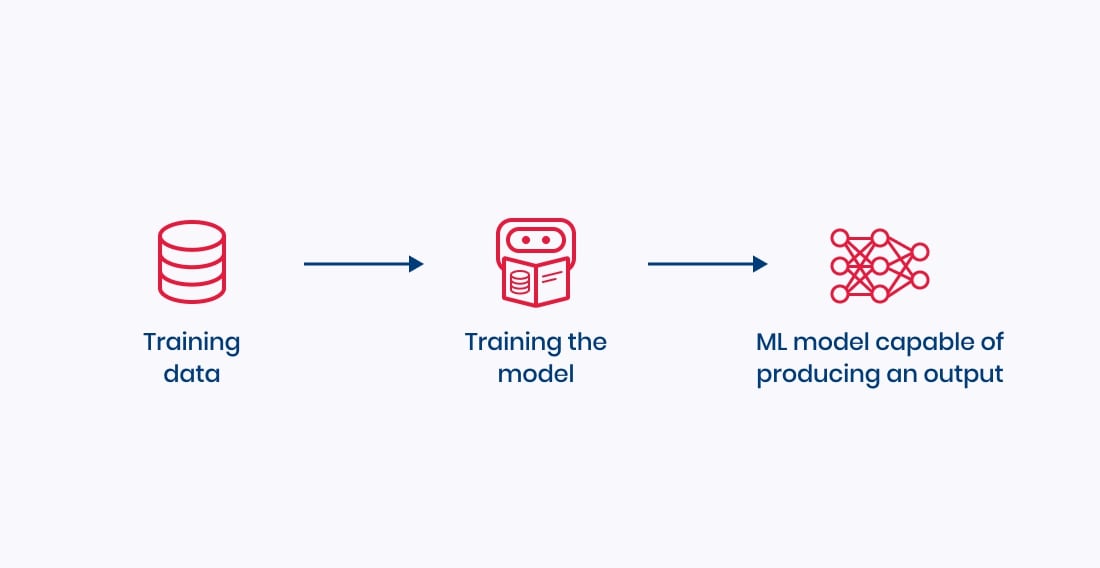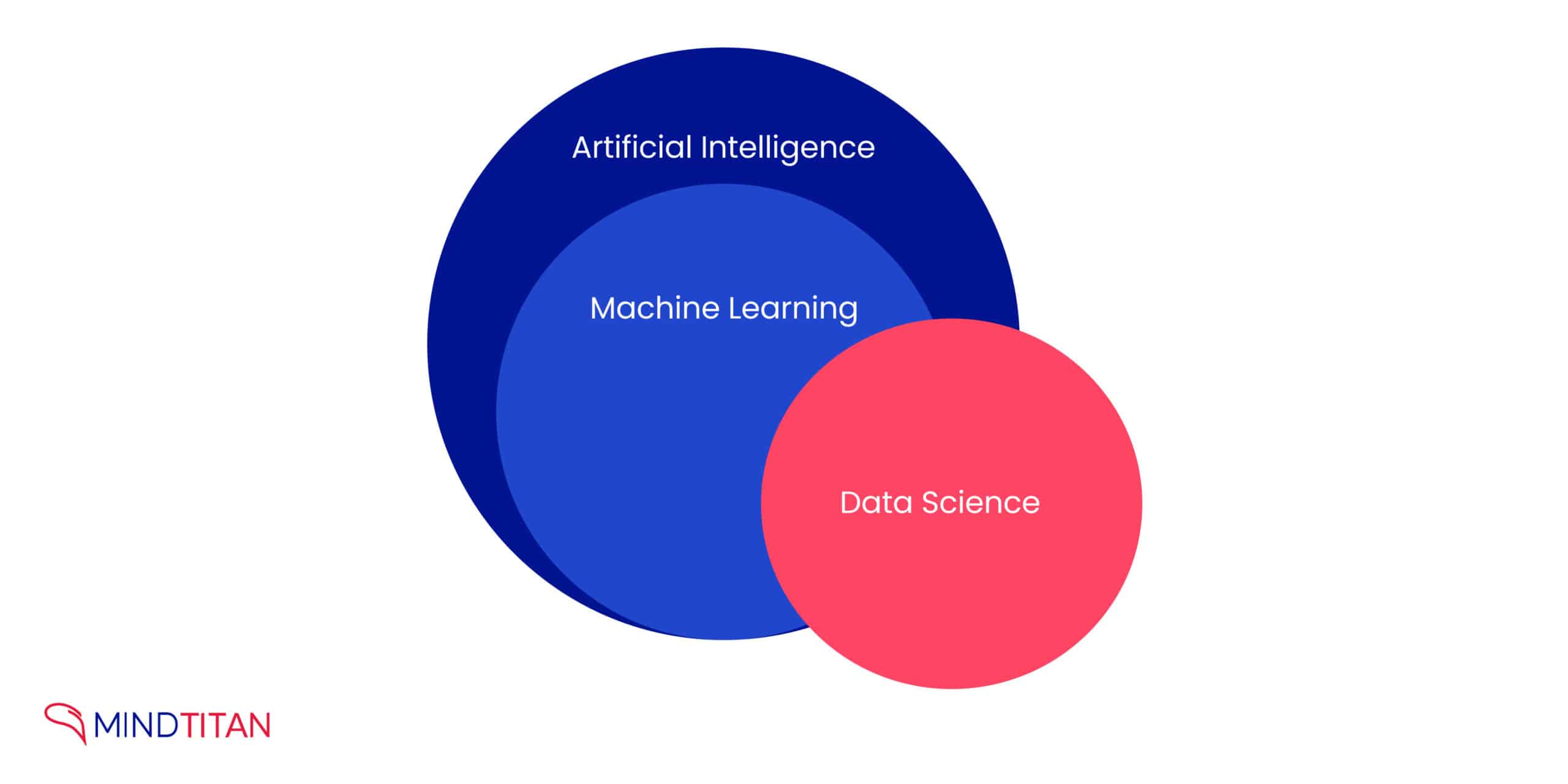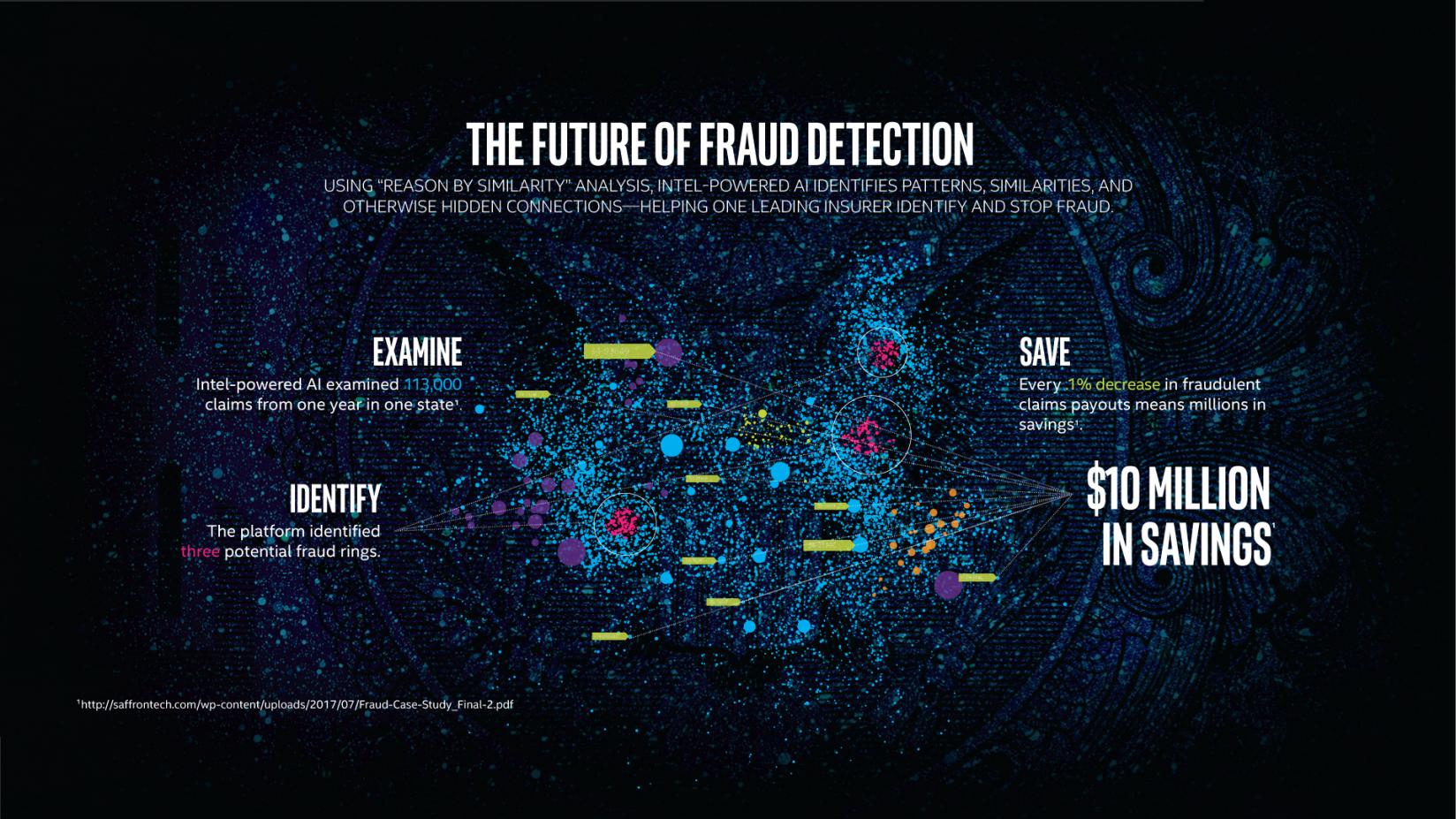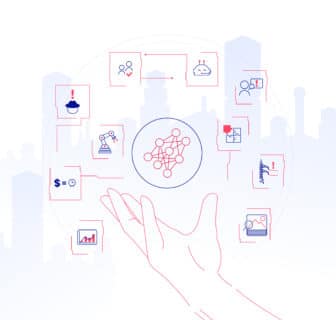The goldmine – no less! – machine learning can be for businesses according to Deloitte’s comprehensive analysis. Machine learning (ML), a dynamic subset of Artificial Intelligence (AI), has become an integral part of our daily lives. Its influence spans across various sectors, reshaping the way we interact with technology and the world around us.
What is machine learning?
Machine learning capabilities extend from enhancing healthcare diagnostics to refining agricultural practices and personalizing entertainment. By analyzing and learning from complex data sets, machine learning enables businesses to uncover hidden insights, predict trends, and make informed decisions without the need for explicit programming. Machine learning is situated within the broader context of AI and data science, focusing on data-driven learning and predictive analysis to tackle specialized tasks.

While artificial intelligence, machine learning, and data science are often used interchangeably due to their significant overlaps and continual advancements at their intersection, understanding their nuanced differences can be essential for business leaders looking to implement these technologies. Nevertheless, in most practical scenarios, using these terms synonymously is generally acceptable, especially when discussing specific business applications with machine learning experts.

Understanding the Four Pillars of Machine Learning
One of the most effective systems for machine learning training is human-in-the-loop (HITL), a process where humans collaborate with algorithmic systems like computer vision, machine learning, or AI to enhance their accuracy. In this system, human feedback is used to continually refine and improve the model’s understanding, similar to how a parent teaches a child to differentiate between animals. It can be applied to any of the following systems.
- Supervised Learning: The Guided Approach. In supervised learning, algorithms are trained using labeled data. This method involves the algorithm learning from training examples on a dataset that includes both the input and the desired output. As the algorithm processes this data, it develops the ability to make predictions or classify data points on new, unseen datasets.
- Unsupervised Learning: The Self-taught Technique. Unsupervised learning involves training algorithms using data that has no labels or defined outcomes. The goal is to allow the algorithm to find patterns and relationships within the data independently. Unsupervised machine learning is ideal for exploratory analysis or identifying hidden patterns in data.
- Semi-Supervised Learning: The Best of Both Worlds. Semi-supervised learning blends the principles of both supervised and unsupervised learning. It utilizes a small set of labeled data along with a larger pool of unlabeled data. This approach is particularly beneficial when acquiring labeled training data is costly or time-consuming.
- Reinforcement Learning: Learning Through Errors. Reinforcement learning is based on the concept of agents learning to make decisions by taking actions in an environment to achieve maximum cumulative reward. This approach is widely used in areas such as robotics, gaming, and navigation.
What can machine learning do?
Machine learning applications, often perceived as near-magical tools, hold immense potential for solving a variety of complex problems and enhancing business operations. However, the most effective usage of AI and machine learning technology primarily focuses on solving problems through classification and regression tasks (or getting insights/recommendations based on the patterns from those tasks), which cover a wide array of practical applications. While other more complex or ‘exotic’ methods exist, they are generally less universally applicable than these fundamental techniques.
Classification and regression are usually done with supervised machine learning. This approach is instrumental in automating or semi-automating various processes, particularly when integrated with human-in-the-loop systems. By doing so, it enhances the effectiveness of these systems by incorporating human insights into the learning process.
To (re)define your business problems through classification or regression is more often possible than not.
- Classification:
This aspect involves categorizing data into different classes or groups based on learned patterns from labeled datasets. It’s essential in applications where data needs to be accurately sorted into predefined categories, such as email spam filters or AI image recognition systems. Use classification if the outcome needs to categorize data into discrete labels (Yes/No, Pass/Fail, Spam/Not Spam). - Regression:
Regression deals with predicting continuous outcomes based on the analysis of historical data. It is widely used in scenarios like forecasting stock prices or real estate values, where precise predictions based on past trends are crucial. Use regression if the outcome is a numerical value that you want to predict (sales figures, customer lifetime value, etc.).

Incorporating human-in-the-loop systems with supervised learning elevates its capabilities. Humans can provide nuanced feedback and corrections, guiding the algorithms to more accurate and relevant insights. This synergy is especially beneficial in complex scenarios where automated systems alone might not suffice.
- Enhanced Automation and Semi-Automation:
By combining supervised learning with human feedback, businesses can achieve a balance between automation efficiency and human expertise. This approach is effective in tasks that require a degree of human judgment but can be laborious or time-consuming if done manually. - Gaining Insights and Recommendations:
Supervised learning algorithms, supplemented with human input, can unearth insights and offer recommendations beyond human capacity. They excel in solving problems that require analyzing vast datasets to identify subtle patterns or predict future trends, which are often challenging for humans to discern or compute.
Real-World Machine Learning Examples
Machine learning (ML) has become an integral part of various domains, significantly impacting daily life in multiple ways. Here are expanded insights into some more examples of machine learning in these areas:
Classification examples
Fraud Prevention:
Banks and insurance companies use machine learning algorithms to detect unusual patterns that may indicate fraudulent transactions. These computer systems can identify anomalies in transaction behaviors, alerting the bank and the customer to potential fraud.
AI in Equipment Monitoring:
With AI integration, human supervisors are promptly alerted about potential faults, allowing them to visually confirm and rectify issues, thereby reducing maintenance costs and minimizing operational downtime.
The collaboration between Hepta Airborne and MindTitan on power grid maintenance serves as an exemplary case study. This project, detailed in a specific computer vision case study, demonstrates how various machine learning techniques can be effectively applied to detect faults in critical infrastructure.

Shelf Monitoring:
Robots equipped with computer vision and ML algorithms are being used to monitor retail shelves. They efficiently detect misplaced items, low stock, or out-of-stock scenarios, enabling retailers to manage inventory more effectively.
Checkout Optimization:
Image recognition technologies ensure that every item is accounted for in shopping carts, reducing losses due to unscanned items and improving the checkout process.

Security and Activity Monitoring:
Video analysis tools powered by machine learning can detect unusual or suspicious activities like shoplifting, enhancing in-store security.
Workplace Safety Compliance:
These systems also play a critical role in identifying violations of safety policies, such as the absence of required personal protective equipment among employees, thus maintaining a safe working environment.
Quality Control:
In manufacturing, agriculture or retail idustries, AI-driven video analysis helps in identifying production line issues, like conveyor malfunctions or product defects such as cracks or rot. This not only ensures the quality of the products but also helps in maintaining the efficiency of the production line.

AI Chatbots
Advanced AI chatbots are at the forefront of this revolution in customer service. These bots are designed to handle a broad spectrum of customer interactions, thereby reducing the overall cost of customer service operations. More importantly, they enhance the customer experience, which is crucial in building and maintaining customer loyalty. Natural language processing enables chatbots and virtual assistants, like Siri and Alexa, to understand and respond to user queries in natural language, providing a more intuitive user experience.
A notable example of effective chatbot deployment is by Elisa, a leading telecommunications company in Northern Europe. Their chatbot, Annika, successfully manages 70% of all inbound customer contacts, achieving a remarkable 42% rate in first contact resolution (FCR). This implementation highlights the potential of AI chatbots in streamlining customer service and improving customer satisfaction rates.
Regression examples:
Credit Decisions:
Machine learning plays a crucial role in determining creditworthiness, assessing risks based on a customer’s financial history, and other relevant factors, thus aiding in more accurate credit decision-making.
Route Identification and Traffic Time Calculation:
For AI it is finding the shortest time, machine learning algorithms in navigation apps like Google Maps and Waze analyze various factors such as current traffic conditions, historical traffic data, and road closures to suggest the best routes and estimate travel times. These apps constantly update this information to provide real-time assistance for commuting.
Machine learning also helps in predicting traffic congestion, thereby assisting in better commute planning. This technology considers time of day, historical traffic patterns, ongoing construction, and even special events that might affect traffic.

Predictive Maintenance
Some machine learning algorithms go a step further by predicting potential faults. This predictive capability enables businesses to proactively address issues, significantly reducing the likelihood of unexpected problems and unplanned disruptions in work processes.
Dynamic Pricing
Since regression models predict continuous outcomes, they can be used to find out the optimal price for a product. The machine learning algorithm takes into account various factors like demand, time of day, customer behavior, competition, and others.
Then, the machine learning model tries to find the patterns and relationship between these variables and the price, allowing businesses to adjust prices dynamically in response to changing conditions.

Human-in-the-loop examples
Recommendation engines are pivotal in today’s business landscape, offering tailored product or service suggestions to users. Machine learning-driven recommendation engines process individual user data, such as past purchases and viewed items, along with broader datasets like demographic trends and inventory levels. This results in customized product and service suggestions, significantly boosting customer satisfaction.
Emoticon Use and Friend Suggestions:
Machine learning algorithms analyze user interactions and behaviors on platforms like Facebook to suggest appropriate emoticons and friends. These suggestions are based on past interactions, common connections, and shared interests.
Content Filtering and Recommendations on Instagram: Instagram employs machine learning to personalize your feed and explore page. The machine learning system also analyzes your likes, follows, and engagement patterns to recommend content and new accounts to follow. For more information on how Instagram uses machine learning applications, visit Instagram’s Machine Learning.
Suggested Followers on Social Media Platforms:
Machine learning helps in identifying potentially interesting profiles for you to follow based on your existing network, interests, and engagement history on platforms like Twitter and LinkedIn.
Job recommendation:
Fuzu, Helsinki-based company, in collaboration with MindTitan, implemented an ML-powered technology to match East African job seekers with suitable employers, leading to a 30% increase in job application click-through rates.

E-commerce:
Major online retailers like Amazon and Walmart leverage recommendation engines to personalize the shopping experience.
Entertainment Platforms:
Netflix and YouTube use a machine learning algorithm to recommend content based on users’ viewing history and preferences, enhancing user engagement. By analyzing data such as viewing history, show details, and user activity patterns, Netflix personalizes content recommendations, which drives 80% of the hours streamed on the platform.

Education paths:
The Ministry of Education’s pioneering project, made with the help of MindTitan, is revolutionizing education with AI by fostering self-directed learning, facilitated by the innovative use of AI and machine learning. Through the personalized learning application, Koolikratti, teachers can tailor educational content to each student’s unique needs and monitor their progress. Machine learning applications play a crucial role here, analyzing students’ activities within the study environment. It tracks their reading habits, test performances, and understanding of the material, enabling the virtual assistant Marakratt to make informed suggestions for further reading or practice. Marakratt, acting as a guiding friend rather than a strict instructor, offers advice and recommendations based on the student’s activities and progress.
Generative AI as a Subset of Machine Learning
Generative AI specifically refers to the branch of machine learning that focuses on generating new data that resembles a given dataset. This can include generating images, text, music, or other types of content.
- Product Descriptions: E-commerce platforms use generative AI to automatically generate product descriptions based on product attributes, saving time and ensuring consistency across large catalogs.
- Manufacturing Design: Generative AI helps in optimizing product designs in industries like automotive and aerospace by generating and testing thousands of design iterations to find the most efficient and cost-effective solution.
- Pharmaceutical Research: In the pharmaceutical industry, generative AI is used to design new drug molecules. By analyzing vast datasets of chemical compounds, AI can generate potential drug candidates, speeding up the drug discovery process.
- Marketing and Advertising: Generative AI is integrated to create personalized marketing content, such as automated social media posts, email campaigns, and advertisements. Tools like Jasper or Copy.ai generate text based on input data, enabling marketers to scale content creation quickly.
Conclusion
In an era where innovation is not just desired but required for survival, machine learning (ML) emerges as a beacon of transformation for businesses. Deloitte’s staggering analysis, highlighting potential gains up to a monumental $20 million, underscores machine learning’s profound impact on revenue growth.
Beyond mere financial benefits, machine learning‘s versatility can breathe new life into various sectors – from revolutionizing healthcare diagnostics and agricultural practices to personalizing entertainment experiences. This cutting-edge subset of Artificial Intelligence (AI) streamlines processes, simplifying complex tasks such as data categorization and trend forecasting.
While machine learning encompasses a broad spectrum of AI and data analysis, its real power lies in the simpler, yet impactful tasks of classification and regression. These foundational techniques, particularly when combined with human feedback, enable businesses to automate processes and glean insights with a precision that was previously unattainable.
In essence, embracing machine learning isn’t just about keeping up with the times; it’s about unlocking new realms of possibilities, making it an indispensable tool for any forward-thinking business.

